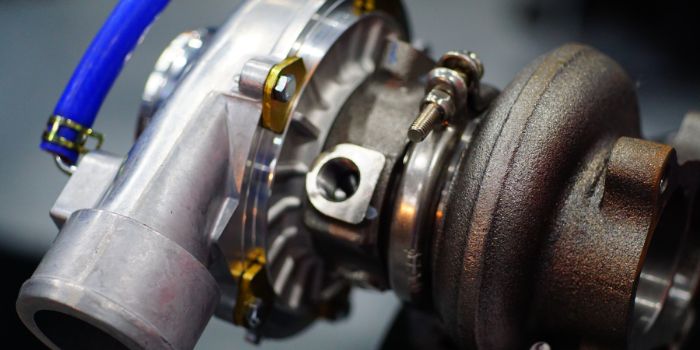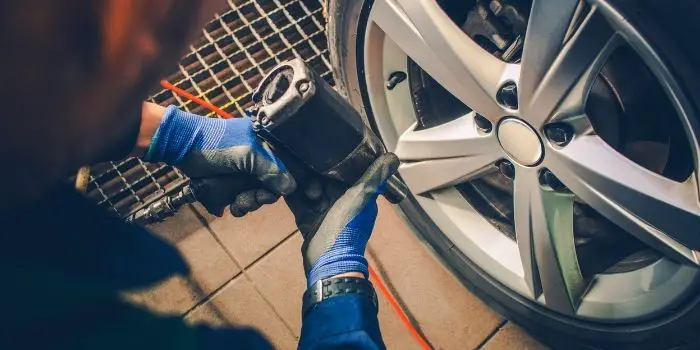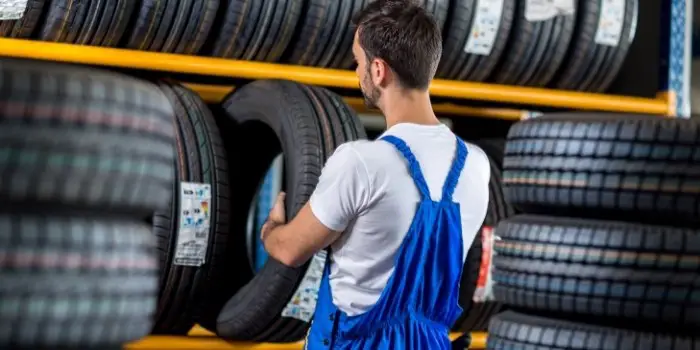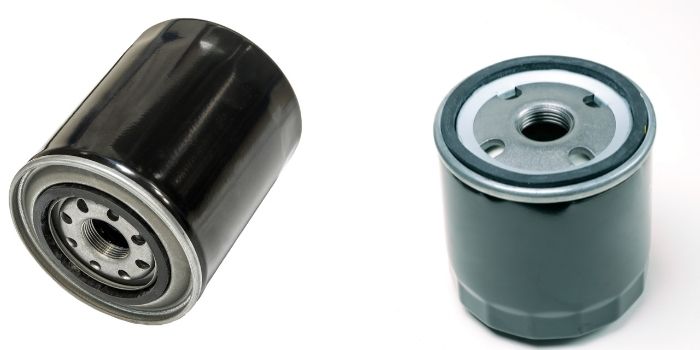
There are many different types of car brakes, from the traditional brake pads to the more modern braking system.
Each type of brake has its own advantages and disadvantages, so it is important to know what type of brake you need for your vehicle.
In this blog post, we will discuss the different types of brake pads and braking systems available on the market today.
We will also provide tips on how to choose the right brake pad for your car. Read on to learn more!
Table of Contents
Types of Brakes
Brakes are essential to the function and safety of your vehicle.
There are many different types of brakes available on the market, each with its own set of advantages and disadvantages.
Here is a look at some of the most popular types of brakes:
1- Electric Brakes
The working of electric brakes is pretty simple. When you step on the brake pedal, it sends a signal to an electric motor.
This, in turn, activates the calipers that press the brake pads against the rotors.
Electric brakes are typically found on newer vehicles and can last up to 100,000 miles before needing to be replaced.
2- Air Brakes
Air brakes are a type of braking system that uses compressed air to press the brake pads against the rotors.
These systems are typically found on larger vehicles, such as trucks and buses.
Air brakes can last up to 200,000 miles before needing to be replaced.
3- Emergency Brakes
Emergency brakes are a type of braking system that uses hydraulic pressure to press the brake pads against the rotors.
Emergency brakes are designed to be used infrequently, they are an essential safety feature that should be regularly inspected and serviced.
If you don’t know how to check your emergency brakes or don’t have time to do it yourself, take your car to a qualified mechanic who can inspect them for you.
4- Disc Brakes
Disc brakes are the most common type of brake found on modern vehicles. They work by using calipers to press brake pads against a rotor.
Disc brakes work well in all weather conditions.
5- Drum Brakes
Drum brakes are a type of brake that uses shoes to press against the drum. These typically last longer than disc brakes.
The main advantage is that they are less expensive than disc brakes. While the disadvantages are that they can be less effective in wet weather and more likely to cause brake fade.
Brake shoes are another type of brake. They are typically made from metal or composite and are located in the drum brakes.
Brake shoes press against the drum to create friction, which slows down the wheel.
6- Magnetic Brakes
Magnetic brakes use magnets to create a force that opposes the rotation of a shaft, thereby slowing it down.
Magnetic brakes are often used in applications where there is a need for precise speed control, such as in wind turbines and electric vehicles.
In addition, they have the advantage of being more energy-efficient than friction brakes, as they do not generate heat.
As a result, magnetic brakes are an important technology for a variety of applications.
7- Hydraulic Brakes
Hydraulic brakes are a type of braking system that uses hydraulic fluid to press the brake pads against the rotors.
Hydraulic brakes also include improved braking performance and less brake noise.
8- Pneumatic Brakes
Pneumatic brakes are a type of brakes that uses compressed air to stop the vehicle.
The pneumatic brake system is made up of an air compressor, air tanks, and a brake controller.
The air compressor fills the air tanks with compressed air when the vehicle is not in use.
When the brake pedal is depressed, the air from the tanks is released and goes through the brake controller to the brakes.
The pneumatic brake system is often used in heavy-duty vehicles, such as buses and trucks because it can provide a large amount of stopping power.
In addition, pneumatic brakes are less likely to overheat than other types of brakes, making them ideal for use in hot climates.
9- Friction Brakes
Friction brakes are the most common type of brakes used on vehicles. These brakes work by using friction to convert the kinetic energy of the vehicle into heat.
The heat is then dissipated by the brake pads and rotors.
Advantages of friction brakes include their low cost and easy maintenance.
However, disadvantages of friction brakes include their tendency to wear down quickly and their susceptibility to brake fade.
10- Regenerative Brakes
Regenerative brakes are a type of braking system that captures the kinetic energy of the vehicle and converts it into electrical energy.
This electrical energy is then used to power the vehicle’s battery.
Advantages of regenerative brakes include their ability to improve fuel economy and their environmental friendliness.
However, disadvantages of regenerative brakes include their high cost and the fact that they require a special battery to operate.
11- Mechanical Brakes
Mechanical brakes are the most common type of brakes used on cars and trucks.
Mechanical brakes are typically activated by a hydraulic system, which uses fluid pressure to press the pads against the rotor.
This system is controlled by a pedal, which the driver presses with their foot to engage the brakes.
Though there are many different designs, all mechanical brakes work by using friction to slow down or stop the motion of a vehicle.
Mechanical brakes are simple, reliable, and easy to maintain, making them a popular choice for both new and experienced drivers alike.
12- Parking Brakes
Parking brakes are designed to keep your vehicle stationary when parked on an incline.
These are especially important if you want to keep your car stable on an inclination like a hill.
13- Power Brakes
Power brakes use a hydraulic system to multiply the force applied by the driver to the pedal.
This system usually includes a booster, which is a device that amplifies the force of the braking system. Power brakes can be found on most modern cars and trucks.
Many people believe that power brakes make it easier to stop a vehicle, but they can actually make it more difficult to control the vehicle during emergency braking situations.
In addition, power brakes can wear out quickly and may require frequent maintenance.
Power brakes can last up to 200,000 miles before needing to be replaced.
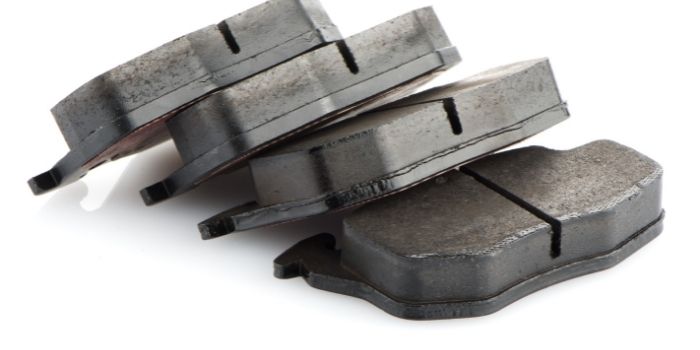
What are the Different Types of Brake Pads?
Brake pads are the most common type of brake. Brake pads can be found in both disc and drum brakes.
They are typically made from a variety of materials, such as ceramic, metal, or composite.
1. Traditional Brake Pads
Traditional brake pads are the most common type of brake pad on the market. They are made of metal or ceramic material and are designed to wear down over time.
These pads typically last between 20,000 and 40,000 miles, depending on your driving habits.
If you do a lot of stop-and-go driving or live in an area with a lot of traffic, you may need to replace your brake pads more often.
2- Ceramic Brake Pads
Ceramic brake pads are made of ceramic material and are designed to last longer than traditional brake pads.
These pads typically last between 40,000 and 60,000 miles, depending on your driving habits.
Ceramic brake pads are also less likely to cause brake noise than traditional pads.
3- Low-Metallic Brake Pads
Low-metallic brake pads are a type of brake pad that uses less metal than traditional brake pads.
This can provide a number of benefits, including reduced noise and improved braking performance.
In addition, low-metallic brake pads typically last longer than traditional pads, making them an excellent choice for those who want to extend the life of their brakes.
While they may cost more upfront, low-metallic brake pads can save money in the long run.
4- Non-Metallic Brake Pads
Non-metallic brake pads are made from a variety of materials, including Kevlar, ceramic, and glass.
They are designed to provide superior braking performance in a wide range of conditions.
Compared to metallic brake pads, non-metallic pads produce less brake dust and are less likely to cause damage to wheels.
They also offer better resistance to fade, making them an ideal choice for high-performance applications.
In addition, non-metallic pads tend to be quieter than their metallic counterparts. As a result, they are often the preferred choice for luxury and performance vehicles.
5- Semi-Metallic Brake Pads
Semi-metallic brake pads are a type of brake pad that contains metal fibers.
The metal fibers help to improve the pad’s ability to grip the Rotor, which in turn helps to improve braking performance.
Semi-metallic brake pads are often used on high-performance vehicles, as they can handle higher temperatures and brake more effectively than other types of pads.
However, semi-metallic pads can also be noisy and create more dust than other types of pads.
Lastly, there are non-asbestos organic (NAO) brake pads that are also made of a non-metal material and designed to last longer than traditional brake pads.
Choosing the Right Braking System and Pad Types
The braking system is an important part of your vehicle. It is responsible for stopping your car when you press the brake pedal.
There are many different types of braking systems, such as hydraulic, pneumatic, and electric.
- A hydraulic braking system is the most common type of system. It uses fluid to transfer force from the pedal to the brakes.
- The pneumatic braking system uses air pressure to transfer force from the pedal to the brakes.
- The electric braking system uses electricity to transfer force from the pedal to the brakes.
1. For Light Compact Cars
Ceramic or low-metallic brake pads are a good choice for light compact cars.
These types of pads typically last between 40,000 and 60,000 miles, depending on your driving habits.
Ceramic pads are also less likely to cause brake noise than traditional pads.
2. For Midsize Cars
If you have a midsize car, you may want to consider a semi-metallic brake pad.
These types of pads are made of metal and ceramic material and are designed to wear down over time.
Semi-metallic pads typically last between 40,000 and 60,000 miles
3. For Sports Cars
If you have a sports car, you may want to consider a ceramic or carbon fiber brake pad.
These types of pads are designed to handle high temperatures and provide good braking performance.
However, they can be more expensive than other types of pads.
4. For Trucks/SUVs/Vans
If you have a truck, SUV, or van, you may want to consider a semi-metallic or ceramic brake pad.
These types of pads are designed to handle the heavyweight of these vehicles and provide good braking performance.
However, they can be more expensive than other types of pads.
FAQS
What is brake fluid?
Brake fluid is a hydraulic fluid that helps transfer force from the pedal to the brakes.
It is important to check your brake fluid levels regularly to ensure that your brakes are working properly.
Also, there are brake lines that are the tubes that carry brake fluid from the master cylinder to the brakes. If there is a leak in the brake line, it can cause the brakes to fail.
Brake rotors vs brake calipers – what’s the difference?
Brake rotors are metal discs that are mounted to the wheels of your vehicle.
The brake pads press against the rotors to create friction, which slows down the wheels.
Brake rotors typically need to be replaced every 30,000 to 50,000 miles, depending on your driving habits.
Brake calipers, on the other hand, are the part of the braking system that actually presses the brake pads against the rotors.
Calipers can become worn over time and may need to be replaced every 50,000 to 70,000 miles.
How to choose the right brake pads and braking system for my car?
When choosing a brake pad for your car, it is important to consider your driving habits and the type of vehicle you drive.
If you do a lot of stop-and-go driving or live in an area with a lot of traffic, you may need to replace your brake pads more often.
If you have a newer car, you may want to consider a brake system. These systems are typically more durable and less likely to cause brake noise.
The Conclusion
Overall, no matter what type of brake pad you choose, it is important to have your brakes checked regularly to ensure they are in good working condition.
Be sure to follow the manufacturer’s recommendations for brake pad replacement.
If you have any questions about brake pads or other car maintenance issues, be sure to ask a professional mechanic.

Based in Orem (Utah) John Paterson graduated from Utah Valley University and has begun writing in 2009. He has a large wealth of experience in writing articles related to cars, automotive repair, wheels, cleaning/maintenance, and much more. He has also written instructional articles in a similar niche for a few online publications as well. Currently, he works as a mechanic in his personal garage shop where he loves serving his countrymen from his heart.

